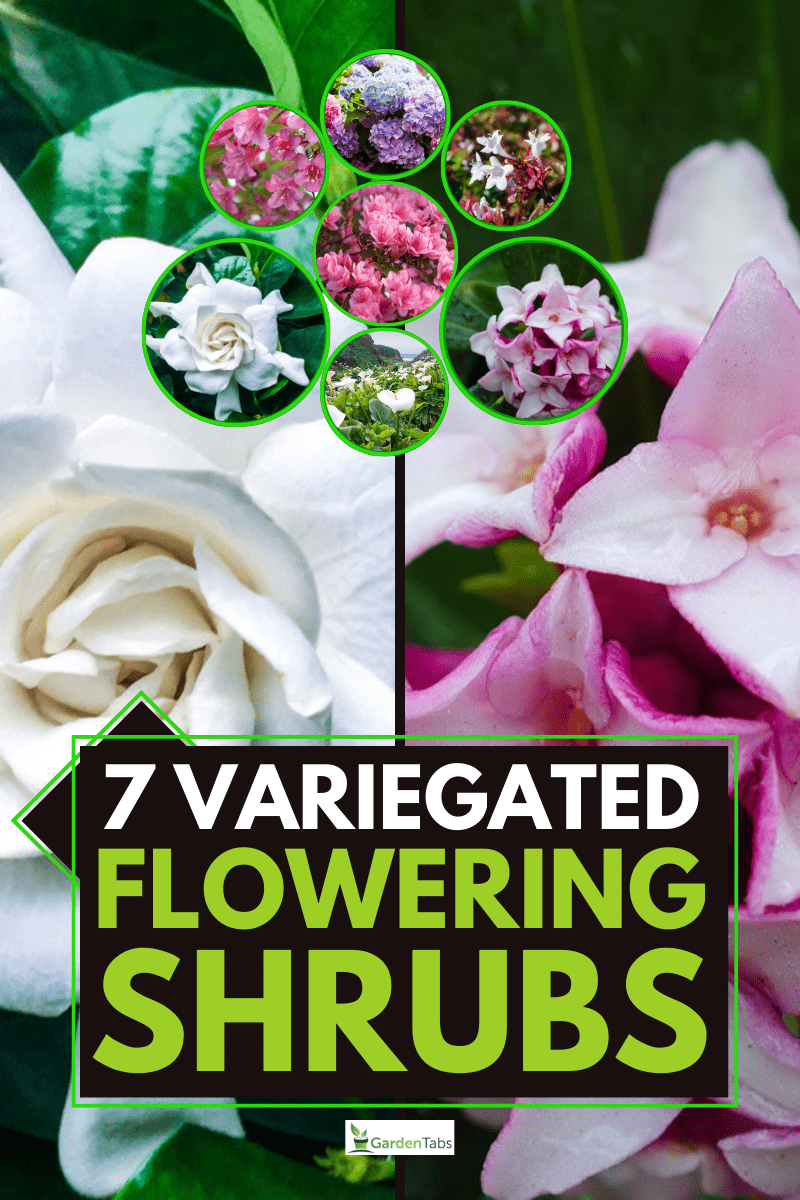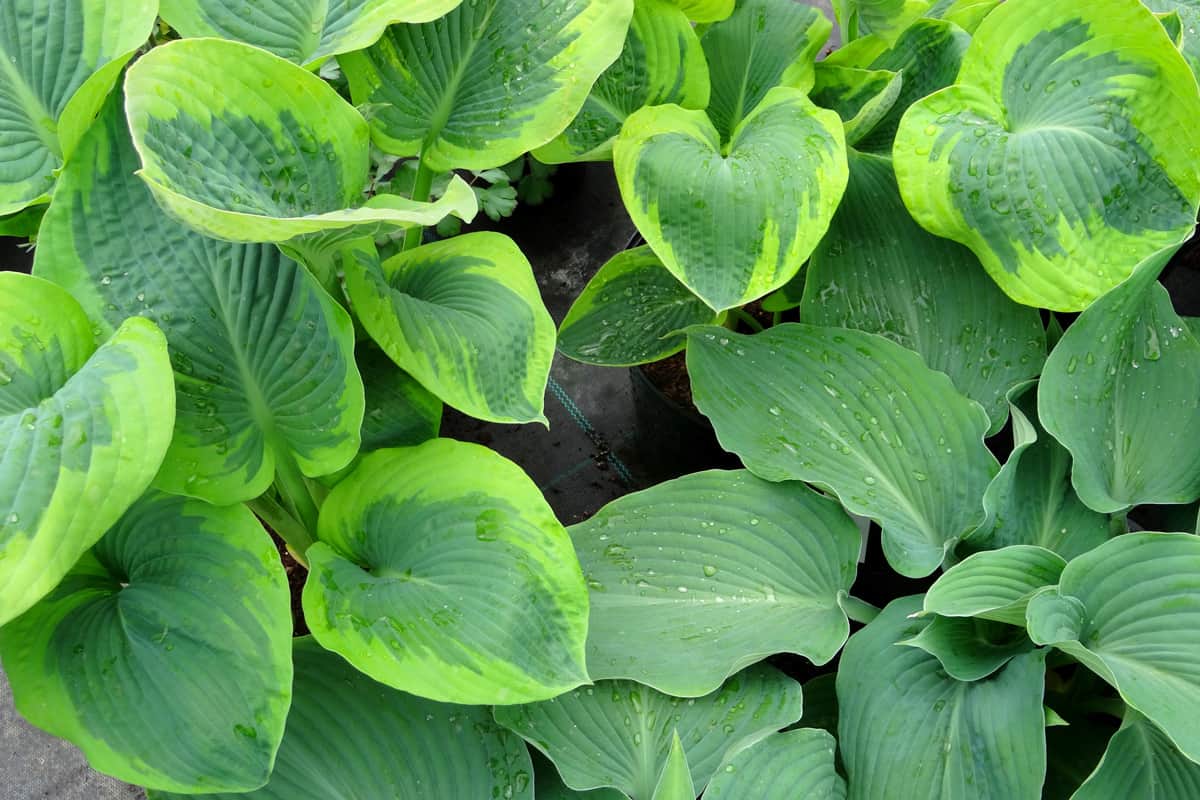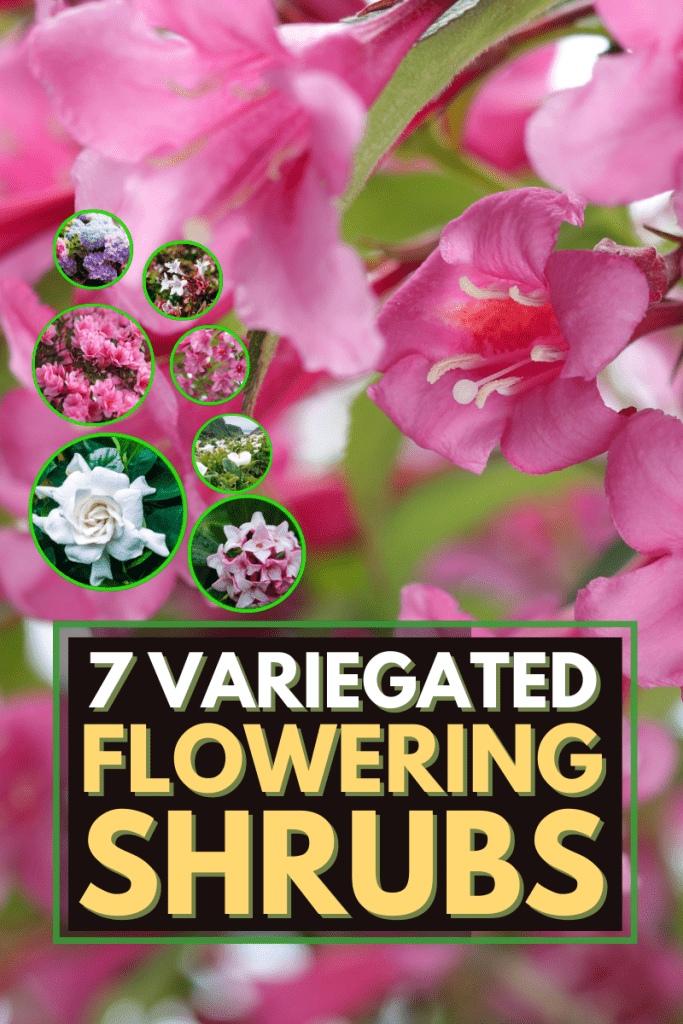Shrubs can be an important element in the structure, aesthetic, and even the privacy of your garden. Flowering shrubs in particular can make your garden more appealing for people and pollinators alike.
When your shrubs aren't flowering, though, the leaves are doing the aesthetic heavy work. We've put together some of the best flowering shrubs with variegated leaves for your perusal and consideration.
All of these flowering shrubs have stunning, variegated varieties:
- Radicans Gardenia
- Hydrangea
- Azalea
- Lily-of-the-Valley
- Daphne
- Weigela
- Confetti Abelia
We'll take a closer look at variegated varieties of each of these shrubs and their defining characteristics. We'll also take a look at different causes of variegation. Read on to learn more about these topics and more!

1. Variegated Radicans Gardenia
Gardenias are widely prized, and it's easy to see (and smell) why. They produce stunning white flowers and their aroma is so enticing it's often used in fragrances.
Most gardenias have deep green leaves, but the gardenia jasminoides, also known as Radicans Variegata, has beautiful olive-green leaves with cream-white borders.
This evergreen prefers partial shade and is averse to cold. Because of this, it is hardy in zones 8 - 10. However, it can still be a great container shrub in colder climates as long as you remember to bring it in to protect it from frost.
2. Variegated Hydrangea
Hydrangeas are loved all over the world. This variegated variety comes from the species hydrangea macrophylla. Macrophylla literally translates from Latin to "big leaf," hence why some refer to these as "bigleaf hydrangeas." They are also sometimes called French hydrangeas, despite their Japanese origin.
You'll find some sources that say that bigleaf hydrangeas are cold hardy through zone 5. However, the University of Massachusetts recommends protecting them when grown in any zones colder than 6.
This variegated variety has lovely white margins around their large green leaves. The flowers grow in a lovely lacecap pattern instead of the more well-known mophead style. A cluster of small flowers are bordered by a trim of larger, sterile flowers.
3. Variegated Azalea
Evergreen azaleas are a popular shrub that look stunning the whole year. Their flowers are among the loveliest spring blossoms, and their foliage is appealing when their flowers fade.
This is especially true of this variegated variety, a registered hybrid that goes by Bollywood Azalea. It has beautiful silvery accents on the leaves.
This variety is relatively low-maintenance and provides beautiful blossoms throughout spring. It is hardy for zones 6 - 9 and does best with partial to full sun.
4. Variegated Lily-of-the-Valley
Lily-of-the-valleys' clusters of bell-like blossoms are among the cutest flowers you can find. These stunning shrubs are also known as pieris japonica. While opting for this variegated variety may feel like gilding the lily, the white variegation on these leaves adds to the stunning spring display this shrub puts on.
Before being domesticated, these plants grew up in forests. Because of that, they prefer dappled light to full sun. Too much sun can even damage these plants. On the other hand, if they don't receive enough light they won't produce as many flowers.
This variety is hardy for zones 6a to 9b. While these plants are fairly tough, their spring flower display can be diminished by late frosts.
5. Variegated Winter Daphne
The winter daphne gets its name because it starts to bloom mid-winter with beautiful flowers that last through early spring. This variegated variety has gorgeous pink buds that blossom into paler flowers. The leaves have a narrow yellow border.
Despite the name, this winter daphne doesn't like to get too cold. It's hardy for zones 7 - 9. It also grows well in containers with soil that drains well.
6. Pink Splash Weigela
Pink splash weigela has gorgeous, densely-packed clusters of, you guessed it, lovely pink flowers. These funnel-shaped flowers are a favorite of hummingbirds, so you may see some flitting about when your weigela blooms in mid to late spring.
This compact shrub grows 4 to 6 feet tall with a 5-foot spread. It can be pruned to fit most spaces well. Of course, this variety also features variegated leaves. The oval-shaped leaves have a lovely white border that really makes them stand out.
This shrub is also more cold-tolerant than many of the others we've seen. It's hardy for zones 3 - 8. To keep yours healthy and happy, keep it in well-drained soil. If you live in a colder climate, mulch your weigela after the ground freezes.
7. Confetti Abelia
The variegaton on the confetti abelia is particularly unique. This is because it often features blushing shades of pink in the borders. These often turn to white like other variegated leaves, but they still make for major eye candy.
Much like the variegation on the leaves, the flowers also range from pale pink to white. This abelia will produce blooms from early summer into the mid fall.
These flowers aren't just easy on the eyes either. They're popular with the bees and butterflies. Not only does this bring in useful pollinators, but it also helps keep your local bee population healthy.
The confetti abelia is hardy for zones 6a - 9b. This stunning shrub is low-maintenance and resistant to pests, deer, and drought.
What Causes Variegation In Plants?

Variegated leaves are eye-catching and can make a plant really stand out, whether in a garden, forest, or even as a houseplant. However, you may well wonder what causes this phenomenon in plants. Well, there's no single answer, but we'll break it down.
In most cases, variegation in leaves happens when some of the cells in the leaf contain chlorophyll but others don't. Those that do have chlorophyll will have the green color you would expect, while those that lack it will take on a paler color. This is often due to genetic factors, but other causes come into play too.
Genetic Variegation

Different causes can lead to this development, but it is somewhat rare in nature. That's because most plants want as much chlorophyll as they can get, maximizing photosynthesis.
However, because humans find these multi-colored leaves so nice to look at, we have selectively bred many variegated varieties.
While selective breeding is the cause for most variegation you'll find these days, it can have other causes too. One is a mutation.
In this case, the cause is still genetic, but instead of inheriting the trait from parent plants, a random mutation causes it. This is why you may occasionally find a variegated plant of a non-variegated variety.
Viral Variegation
Genetic factors are not the only way variegation can happen. Certain viral infections can also cause some of the cells to lose chlorophyll and create two-tone patterns as well.
Often, these kinds of infections cause the leaves to look sickly and may be accompanied by browning as well. In those cases, it's easy to tell that the variegation is a disease and not a feature.
However, certain infections may look quite appealing, at least at first. There are many viruses that can cause these effects, both on leaves and on flowers. Not all of them are life-threatening to your plants, but many are contagious.
Despite this, researchers have noted that certain viral infections actually increase the marketability (and, hence, price) of certain plants.
Blister Variegation
While blister variegation may not sound appealing, it is actually a visually striking form of variegation found on some leaves.
Instead of a lack of chlorophyll, small are pockets on the leaf cause this type of variegation. These air pockets are reflective, so they appear silvery and can even seem to sparkle in the light. If you've ever sworn you've seen your plants glimmer, blister variegation may be the reason.
Perhaps the most well-known example of this style of variegation is the satin pothos, like the one shown above.
Final Thoughts
The word "shrub" feels somehow humdrum when you consider the amazing displays of beauty the ones we've seen today can offer. With their radiant flowers and variegated leaves, these shrubs are sure to turn the heads of more than just hummingbirds and bees.

If you found this article helpful, be sure to check out these great posts:





